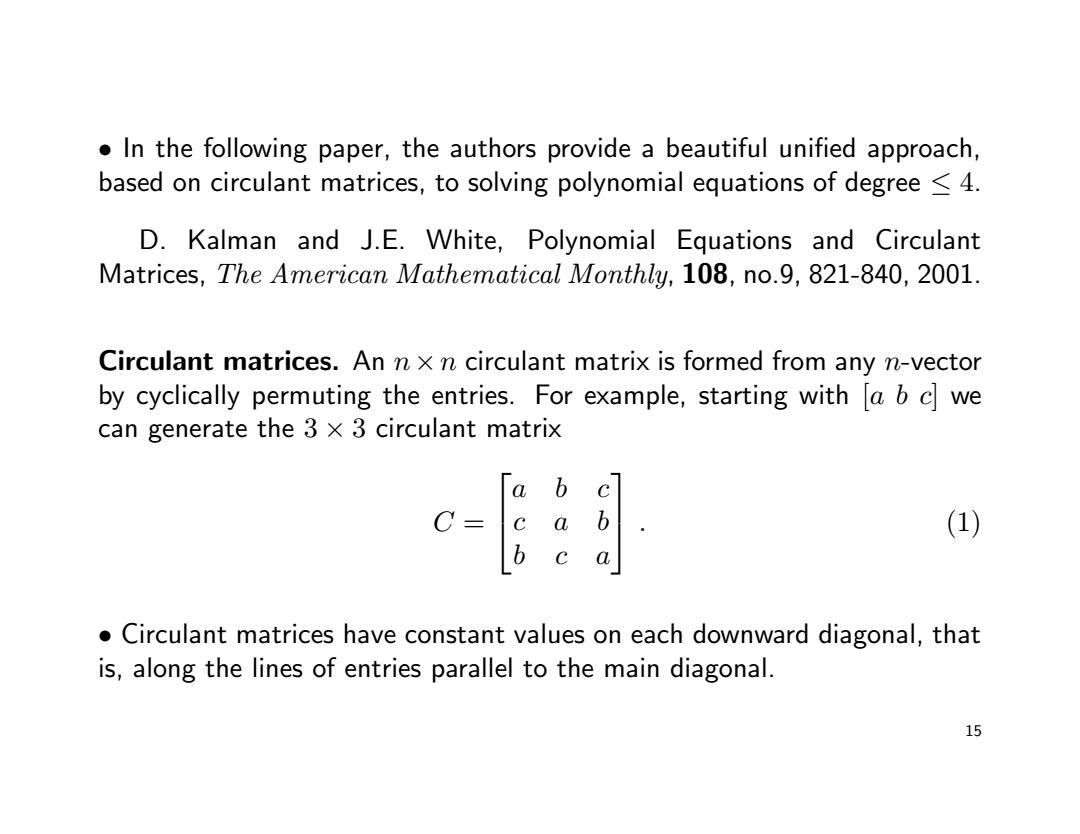
In the following paper,the authors provide a beautiful unified approach, based on circulant matrices,to solving polynomial equations of degree <4. D.Kalman and J.E.White,Polynomial Equations and Circulant Matrices,The American Mathematical Monthly,108,no.9,821-840,2001. Circulant matrices.An n x n circulant matrix is formed from any n-vector by cyclically permuting the entries.For example,starting with a b c we can generate the 3 x 3 circulant matrix b c C a (1) b Circulant matrices have constant values on each downward diagonal,that is,along the lines of entries parallel to the main diagonal. 15
• In the following paper, the authors provide a beautiful unified approach, based on circulant matrices, to solving polynomial equations of degree ≤ 4. D. Kalman and J.E. White, Polynomial Equations and Circulant Matrices, The American Mathematical Monthly, 108, no.9, 821-840, 2001. Circulant matrices. An n×n circulant matrix is formed from any n-vector by cyclically permuting the entries. For example, starting with [a b c] we can generate the 3 × 3 circulant matrix C = a b c c a b b c a . (1) • Circulant matrices have constant values on each downward diagonal, that is, along the lines of entries parallel to the main diagonal. 15
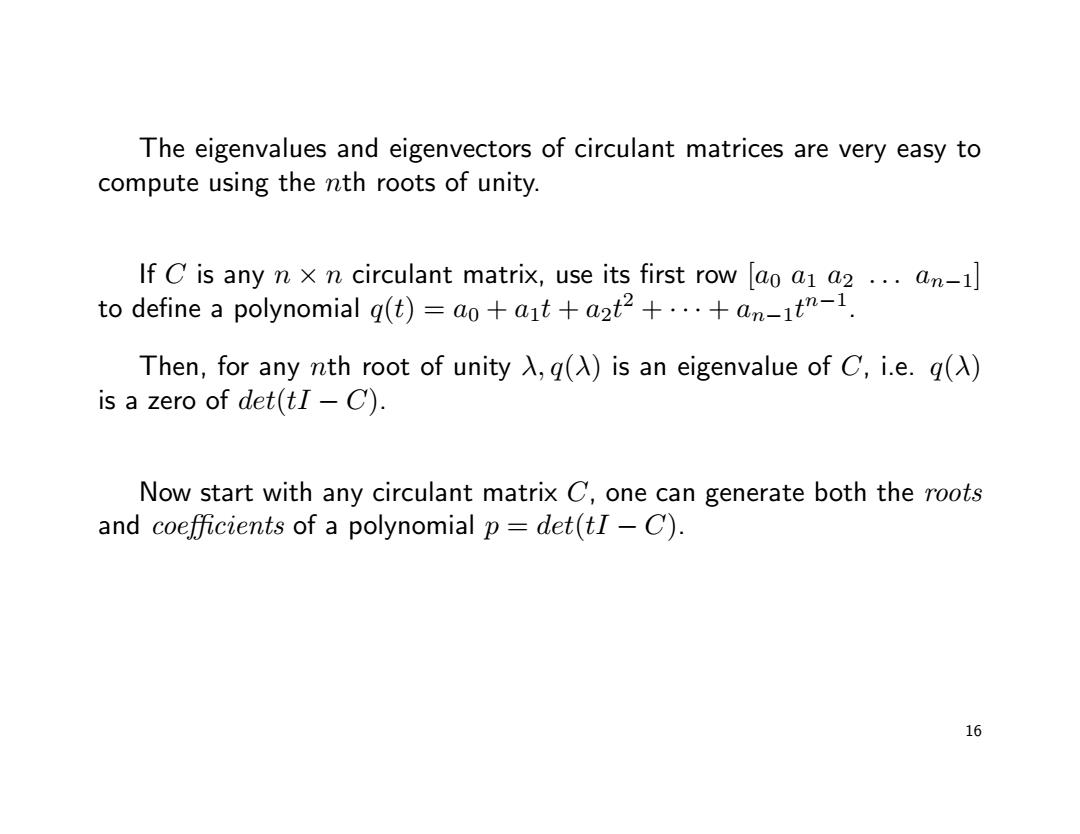
The eigenvalues and eigenvectors of circulant matrices are very easy to compute using the nth roots of unity. If C is any n x n circulant matrix,use its first row ao a1 a2...an-1 to define a polynomial q(t)=ao+ait+a2t2+...+an-1t"-1. Then,for any nth root of unity入,q()is an eigenvalue of C,i.e.q入) is a zero of det(tI-C). Now start with any circulant matrix C,one can generate both the roots and coefficients of a polynomial p=det(tI-C). 16
The eigenvalues and eigenvectors of circulant matrices are very easy to compute using the nth roots of unity. If C is any n × n circulant matrix, use its first row [a0 a1 a2 . . . an−1] to define a polynomial q(t) = a0 + a1t + a2t 2 + · · · + an−1t n−1 . Then, for any nth root of unity λ, q(λ) is an eigenvalue of C, i.e. q(λ) is a zero of det(tI − C). Now start with any circulant matrix C, one can generate both the roots and coefficients of a polynomial p = det(tI − C). 16
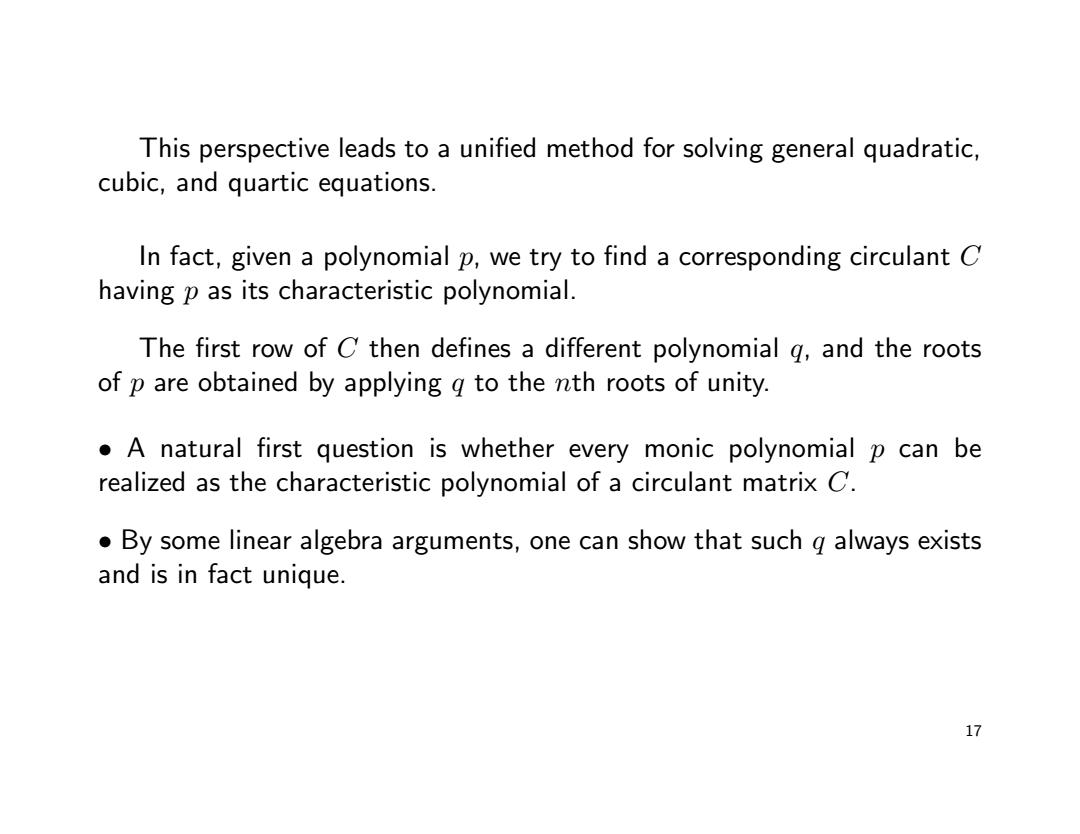
This perspective leads to a unified method for solving general quadratic, cubic,and quartic equations. In fact,given a polynomial p,we try to find a corresponding circulant C having p as its characteristic polynomial. The first row of C then defines a different polynomial g,and the roots of p are obtained by applying g to the nth roots of unity. A natural first question is whether every monic polynomial p can be realized as the characteristic polynomial of a circulant matrix C. By some linear algebra arguments,one can show that such g always exists and is in fact unique. 17
This perspective leads to a unified method for solving general quadratic, cubic, and quartic equations. In fact, given a polynomial p, we try to find a corresponding circulant C having p as its characteristic polynomial. The first row of C then defines a different polynomial q, and the roots of p are obtained by applying q to the nth roots of unity. • A natural first question is whether every monic polynomial p can be realized as the characteristic polynomial of a circulant matrix C. • By some linear algebra arguments, one can show that such q always exists and is in fact unique. 17
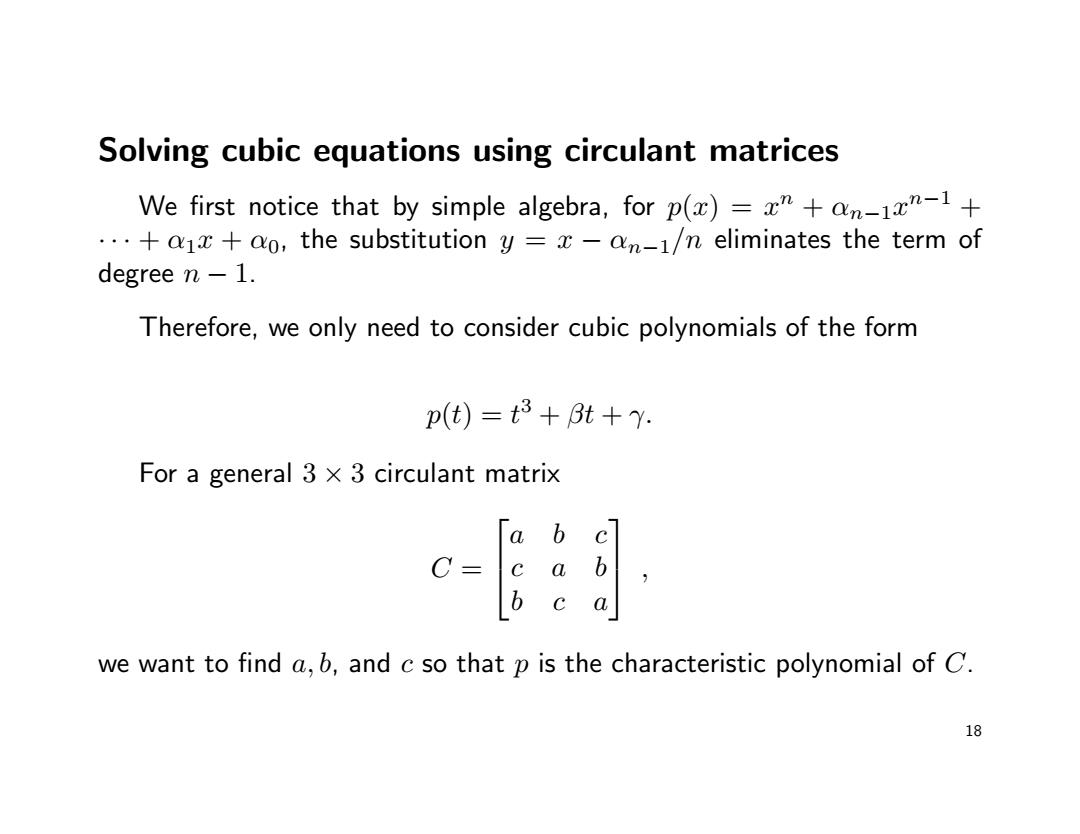
Solving cubic equations using circulant matrices We first notice that by simple algebra,for p(x)=xT+an-1xT-1+ ...+a1x+ao,the substitution y=x-an-1/n eliminates the term of degree n-1. Therefore,we only need to consider cubic polynomials of the form p(t)=t3+3t+Y. For a general 3 x 3 circulant matrix c b C= a b c a we want to find a,b,and c so that p is the characteristic polynomial of C. 18
Solving cubic equations using circulant matrices We first notice that by simple algebra, for p(x) = x n + αn−1x n−1 + · · · + α1x + α0, the substitution y = x − αn−1/n eliminates the term of degree n − 1. Therefore, we only need to consider cubic polynomials of the form p(t) = t 3 + βt + γ. For a general 3 × 3 circulant matrix C = a b c c a b b c a , we want to find a, b, and c so that p is the characteristic polynomial of C. 18
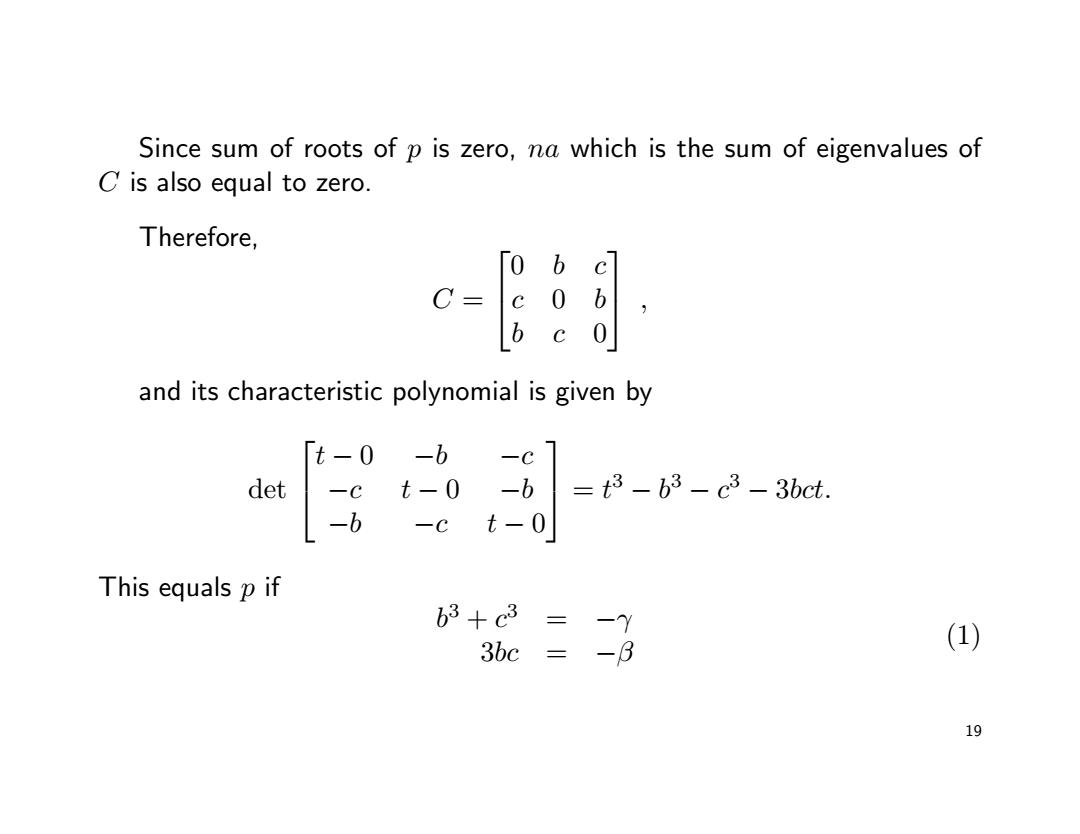
Since sum of roots of p is zero,na which is the sum of eigenvalues of C is also equal to zero. Therefore, )bc C= and its characteristic polynomial is given by 「t-0-b det -C t-0 61 =t3-b3-c3-3bct. b -c t-0 This equals p if b3+c3 -Y 3bc :-3 (1) 19
Since sum of roots of p is zero, na which is the sum of eigenvalues of C is also equal to zero. Therefore, C = 0 b c c 0 b b c 0 , and its characteristic polynomial is given by det t − 0 −b −c −c t − 0 −b −b −c t − 0 = t 3 − b 3 − c 3 − 3bct. This equals p if b 3 + c 3 = −γ 3bc = −β (1) 19